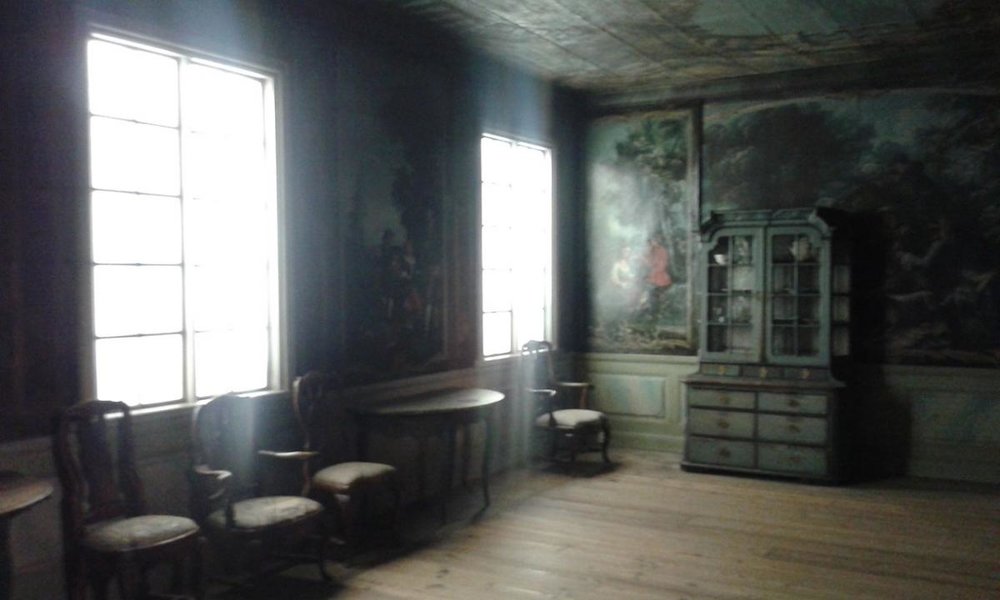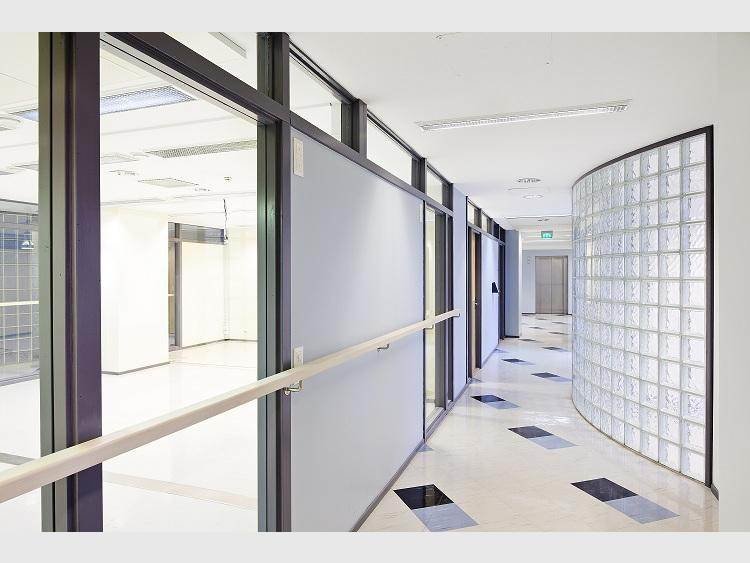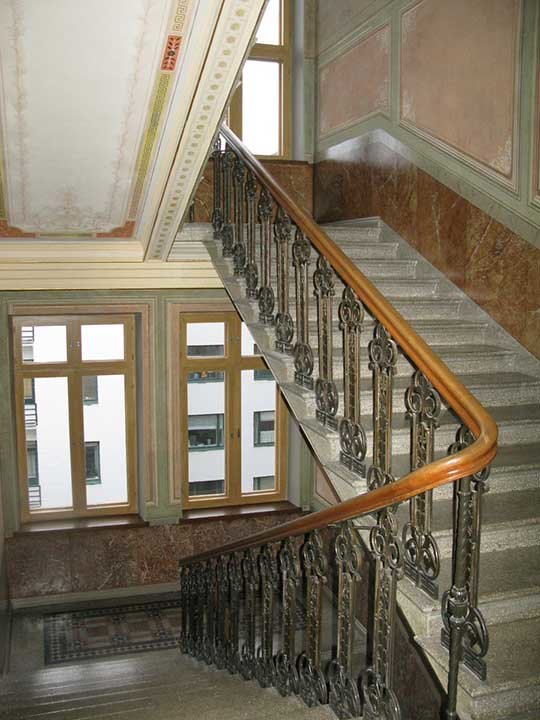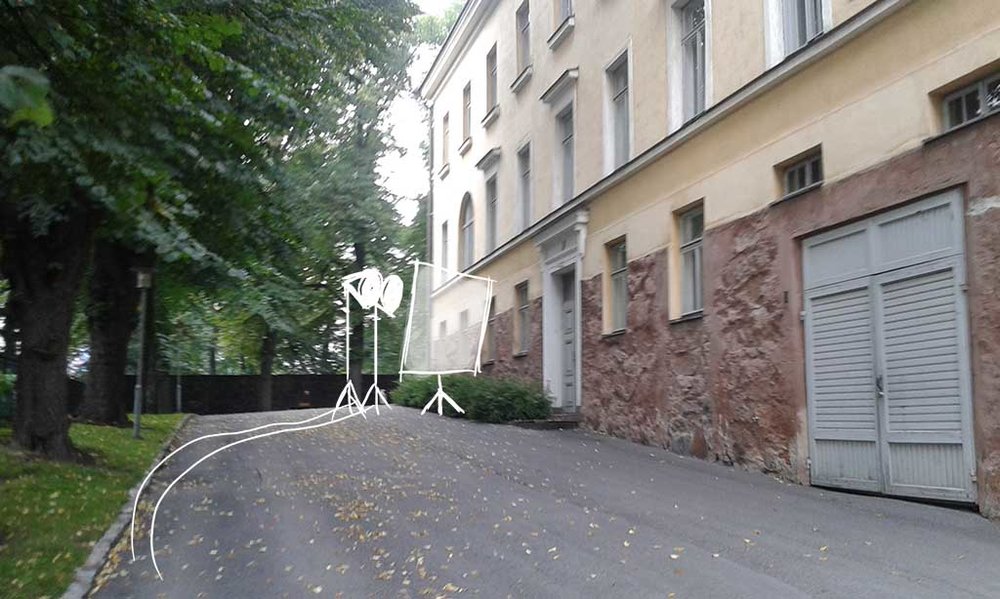-
Posts
44 -
Joined
-
Last visited
Everything posted by Ville Pakarinen
-

Minus green as a lens filter?
Ville Pakarinen replied to Ville Pakarinen's topic in Lighting for Film & Video
Yeah. It's like an infinite equipment storage. Just need to be careful not to let things get out of hand :) -

Minus green as a lens filter?
Ville Pakarinen replied to Ville Pakarinen's topic in Lighting for Film & Video
BTW, here's a pre-visualization of the lighting scheme I'm going for. Luxrender in Blender is an amazing tool for planning since it's very close to real physics. -

Minus green as a lens filter?
Ville Pakarinen replied to Ville Pakarinen's topic in Lighting for Film & Video
Hard to give any feedback without knowing the limitations you had. But I would have tried to somehow dim down the practicals if the frenels weren't very strong. Maybe flagged the background. Without the fresnels, how many stops underexposed would his face be? I would have tried to leave the practicals maybe three or even four stops underexposed. But that, of course, depends on what kind of look you were after. -

Minus green as a lens filter?
Ville Pakarinen replied to Ville Pakarinen's topic in Lighting for Film & Video
Charlie, what sort of white balance options does the pocket camera have? -

Minus green as a lens filter?
Ville Pakarinen replied to Ville Pakarinen's topic in Lighting for Film & Video
Oh yes! Didn't realize the magenta-green axis was referred to as hue. I meant exactly that: moving the color wheel in Resolve (although it's not exactly a wheel in Resolve) so that greens shift towards cyan/blue. This, of course, shifts skin tones towards yellow, so the lights on the talent should be shifted towards red - probably no more than 1/4 stop loss? -

Minus green as a lens filter?
Ville Pakarinen replied to Ville Pakarinen's topic in Lighting for Film & Video
What about shifting hue in post? I got this idea of using the green to our advantage: I could correct only the lights above the talent with minus green gel and leave the background lights uncorrected. Then shift the hue of the high CRI lights a little bit so that when I shift hue in post, I'd get slightly bluish background and correctly balanced light on the talent. -

Minus green as a lens filter?
Ville Pakarinen replied to Ville Pakarinen's topic in Lighting for Film & Video
Hmmm... yes. Doing it in camera would be better. I'm using my BMCC and as far as I know, there's no option for adjusting color on the green-magenta axis. I know this is possible with my Canon 60D DSLR. But since it's raw, how would a custom white balance help since it's not "baked in"? Wouldn't there have to be some kind of digital filter before the raw was even recorded? -

Minus green as a lens filter?
Ville Pakarinen replied to Ville Pakarinen's topic in Lighting for Film & Video
Didn't understand any of that :) -

Minus green as a lens filter?
Ville Pakarinen replied to Ville Pakarinen's topic in Lighting for Film & Video
Man... Always love to have my intuitions confirmed. Thanks! -
When shooting in an office where changing a lot of tubes is both impractical and too expensive, is it possible to correct green with a minus green filter in front of the lens, then add some green to any additional high CRI light's you use?
-

Faking windows indoors
Ville Pakarinen replied to Ville Pakarinen's topic in Lighting for Film & Video
That is true too if there's nothing obscuring the view. I guess it simply comes down to aesthetic preference, not what the audience will find realistic or unrealistic. Personally feel like the ceiling getting too much light is a distraction. -

Faking windows indoors
Ville Pakarinen replied to Ville Pakarinen's topic in Lighting for Film & Video
Interesting, I guess it simply isn't and dried. Depends on so many factors. -

Faking windows indoors
Ville Pakarinen replied to Ville Pakarinen's topic in Lighting for Film & Video
Something about it hitting the ceiling just seems wrong to me. Maybe because I'm imagining this place on a floor of a highrise where most of the light comes from above. Closer to the ground, there's more bouncing of daylight from all directions and thus more light hitting the ceiling. I think it gives away the fact that it isn't in fact a highrise. -

Faking windows indoors
Ville Pakarinen replied to Ville Pakarinen's topic in Lighting for Film & Video
The windows in the museum were covered with some heavy diffusion material that clearly makes the light spread way too much vertically. -

Faking windows indoors
Ville Pakarinen replied to Ville Pakarinen's topic in Lighting for Film & Video
Thanks, David! Yeah, was thinking the same about those small windows. The ceiling itself looks quite neutral white/light gray, at least in that photo. Also, seems very matte surface, which could work very well by itself as bounce material for the skylight. Then, using some warmer fresnels as direct sunlight through light diffusion on the window could be the ticket. Incidentally, I encountered this very lighting challenge in the Finnish national museum today. And like I said, it doesn't look right if the light hits the ceiling too much. That's what I strive to avoid. -
Is there some standard method when using windows between spaces and the other side is supposed to look like exterior? I'm using either open face 1.2K HMIs or open face 575W HMIs. There are a couple of things I'm not so sure of. 1. Diffusion on the window, on a frame in front of the light or both? On the window, it would help hide the space behind the window. But the light fixture, if used without diffusion in front of it, would likely leave a hot spot on the window. I want to blow out the entire surface are of the windows. Also, if using too strong diffusion on the window, it would take out most of the directionality from the light. I want the light to have some directionality, like a hazy morning sun, not look like it's completely overcast. So I was thinking of placing some light diffusion on the windows to help hide the other space and some stronger in front of the lights with maybe some kind of honeycomb to give it more direction. 2. How do you make the light look like it's coming from above instead of sideways? Since the ceiling sets the limit to how high you can place lights, there's a problem with the light looking too horizontal and shining too much on the ceiling. Real daylight shines mostly on the floor even on an overcast day because the sky is a dome above us. So, I was thinking of using separate lights for skylight and direct sunlight. Would it work if I bounced the skylight from the ceiling right next to the window and placed a couple of fresnels close to the ceiling as direct sunlight? Thanks!
-

Can reflectors be gelled?
Ville Pakarinen replied to Ville Pakarinen's topic in Lighting for Film & Video
You mean bounced light is when the surface is diffuse, and reflected is when the surface is specular? I'm not really sure yet what kind of effect I'm looking for. Haven't seen the location yet. -

Does this HMI exist?
Ville Pakarinen replied to Ville Pakarinen's topic in Lighting for Film & Video
That I would most definitely want to do! Unfortunately, our rental firm does not have those junior triple heads nor crank stands. They do have overhead stands and combo stands with wheels. Could I use one of those and rig the lights some other way, or does it require a more heavy duty stand? -

Can reflectors be gelled?
Ville Pakarinen replied to Ville Pakarinen's topic in Lighting for Film & Video
Two guys struggle to reach a door first. I don't want any practical lights there. They are in a hurry and don't have the time to turn on the lights. I'm wondering how the pools of light could be positioned still retaining the feeling that they are created by natural light. -

Can reflectors be gelled?
Ville Pakarinen replied to Ville Pakarinen's topic in Lighting for Film & Video
Yeah, I was also thinking of gelling the windows. In fact, I think that's the ticket! I'm not sure I could hide 1.2Ks with their ballasts and I'd much rather have smaller pools of light rather than a wide fill. Those walls aren't very smooth. Maybe that could motivate a little uneven bounced light look. -

Can reflectors be gelled?
Ville Pakarinen replied to Ville Pakarinen's topic in Lighting for Film & Video
Hmmm... Blade Runner, eh? Actually, I have to look into that look. Maybe it will be interesting. -

Can reflectors be gelled?
Ville Pakarinen replied to Ville Pakarinen's topic in Lighting for Film & Video
Hmmm... That makes a lot of sense. -

Does this HMI exist?
Ville Pakarinen replied to Ville Pakarinen's topic in Lighting for Film & Video
Yeah, I've heard about magnetic ballasts being a little iffy. But that's all the budget allows at the moment. Luckily, I get a change to check the lights out on Wednesday. -
Hi y'all! We're shooting in this gorgeous hallway, and I was thinking of ways to achieve soft light by bouncing off of reflectors attached to the walls. We have some redheads and blondes that I would like to change to daylight. So I got this crazy idea of saving some time and attaching the gel to the reflectors, not on the lights. Would this work? Would I need to use half CTB to achieve full daylight correction since the light goes first through the gel, then bounces back and goes through a second time. Am I being a little too creative here, or is this almost genius-level lateral thinking? Thanks!
-

Does this HMI exist?
Ville Pakarinen replied to Ville Pakarinen's topic in Lighting for Film & Video
Ok so, this guy is renting us some old HMIs with magnetic ballasts: two open face 1.2Ks, one open face 575W and one open face 125W. Since these aren't big enough to cover a very wide area, I was thinking of punching the 1.2Ks and 575K through some light silk close to the actors in shade. There's another scene where a couple of guys head to that door and start a fight. My plan is to create a pool of light at the door, as if the sun was shining through the trees. I'm just wondering if it's even possible to create something resembling somewhat soft direct sunlight with open face HMIs, or are these lights fundamentally not suitable for such a thing? The other option is to just to accept the limitation and create a soft overcast look. But if it's a sunny day, the sun will be shining through those trees, creating spots of direct light, which would ruin the look.







